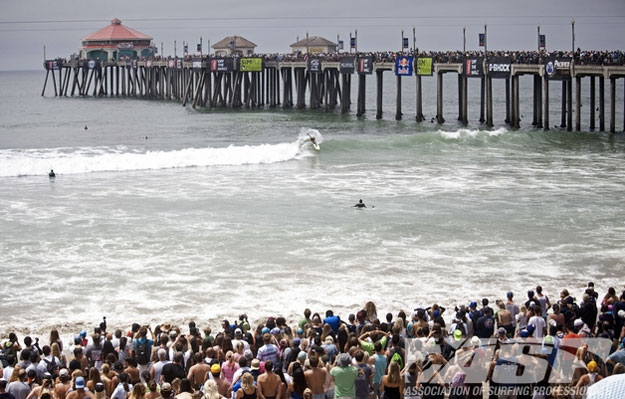Surfing is a unique sport because every ride is a new experience, especially compared to its action sports counterparts–skating and snowboarding. They have the advantage of being able to practice the same trick off the same surface time and time again. Surfers have to be more adaptable to their conditions; they need to adapt quickly since a wave lasts for only moments. For someone who is in charge of training and conditioning surfers, it raises a few questions on the best way to go about getting the most out of our athletes. One of those questions is which would be a better program design: “periodization” or “muscle confusion?”
In case you’re not familiar with those terms, I’ll give you a brief background, starting with “periodization.” Head of the US Olympic Committee Michael Stone describes it as, “a logical phasic method of varying training volume, intensity factors, and exercises in order to optimize training progress.” This type of training usually runs in micro-cycles lasting a few weeks to months at a time with relatively small changes targeting only one or two aspects of fitness each cycle. Having a structured program like this will prevent over-training and allow athletes to peak at the right moment. Periodization training can be traced all the way back to the early Olympics, and numerous studies done over the years back up the positive effects, most notably in skill acquisition and neuromuscular training–which has the potential to be great for surfers.
The other leading choice of program design would be “muscle confusion.” Used since the 70’s and developed by Joe Weider, one of the most influential athletic trainers of all time, it was part of a larger set of guidelines that Joe called the “Weider Principles.” The goal of muscle confusion is to change the workout each time so the body will be in a constant state of adaption. In theory, this forces the body to avoid plateaus by never developing a familiarity with one routine. In a recent 12-week study done by Arizona State University, people who followed an undulating periodization program (fancy term for muscle confusion) performed 100 percent better than those following a normal periodization program. The constant need to rise to the challenge and adapt to what’s put in front of you parallels the needs of surfers and makes this seem like an obvious choice.
So is one better than the other? Yes and no. Like most things in fitness, it comes down to the individual and their goals. Over the years of working with surfers and through our own athletic testing, we’ve found out that it comes down to the details.
Professionals have an advantage over the rest of us because they know where they’ll be surfing, when they’ll be surfing, and they have a general idea of what will be expected of them at that break. The benefit of knowing those few details allows us at Extreme Athletics to dial in a surfer for their immediate goals. For example, when I was training Courtney Conlogue for the US Open this year, I used the periodization method, putting her in a micro-cycle of stability and power. We knew that conditions weren’t going to be perfect at Huntington, but they would provide sections for big turns and some above-the-lip surfing, so we focused on areas that would give her the best opportunity for a good result. Courtney dominated her heats to the final and finished second overall, moving to the third spot on tour. We couldn’t have been happier for her.
For the day-to-day surfer, however, muscle confusion is definitely the way to go. The reason is that most of us are at the mercy of the two to three breaks in our area. That means from week to week, we need to be ready for anything from two foot slop to overhead and firing. In addition, when compared to a professional athlete, most people are going to need a wider range of conditioning than just improving a few aspects of their fitness. Keeping workouts new while focusing on a variety of muscular and neuromuscular systems has proven to not only be fun but to also produce the best results. We are always stoked when one of our clients comes in and tells us that they’ve surfed better than they have in years. Ultimately, that feedback and those results are why we love what we do and feel lucky to be able to help people enjoy a sport that we’re all passionate about.
Define your needs and be realistic about your goals then go from there. Take into account not only your level of surfing but your level of fitness as well. Weigh the options and think about the details and they will point you in the right direction.
If you need more information or have any questions please feel free to reach out to us by clicking here.


